Museum Row

| Route 66 | Cities | Beaches |
Museum Row
|
 |
| GettingThere | Lodging | Restaurants | Distilleries | My Old Kentucky Home | Dinner Train | Bernheim Forest | Museums |
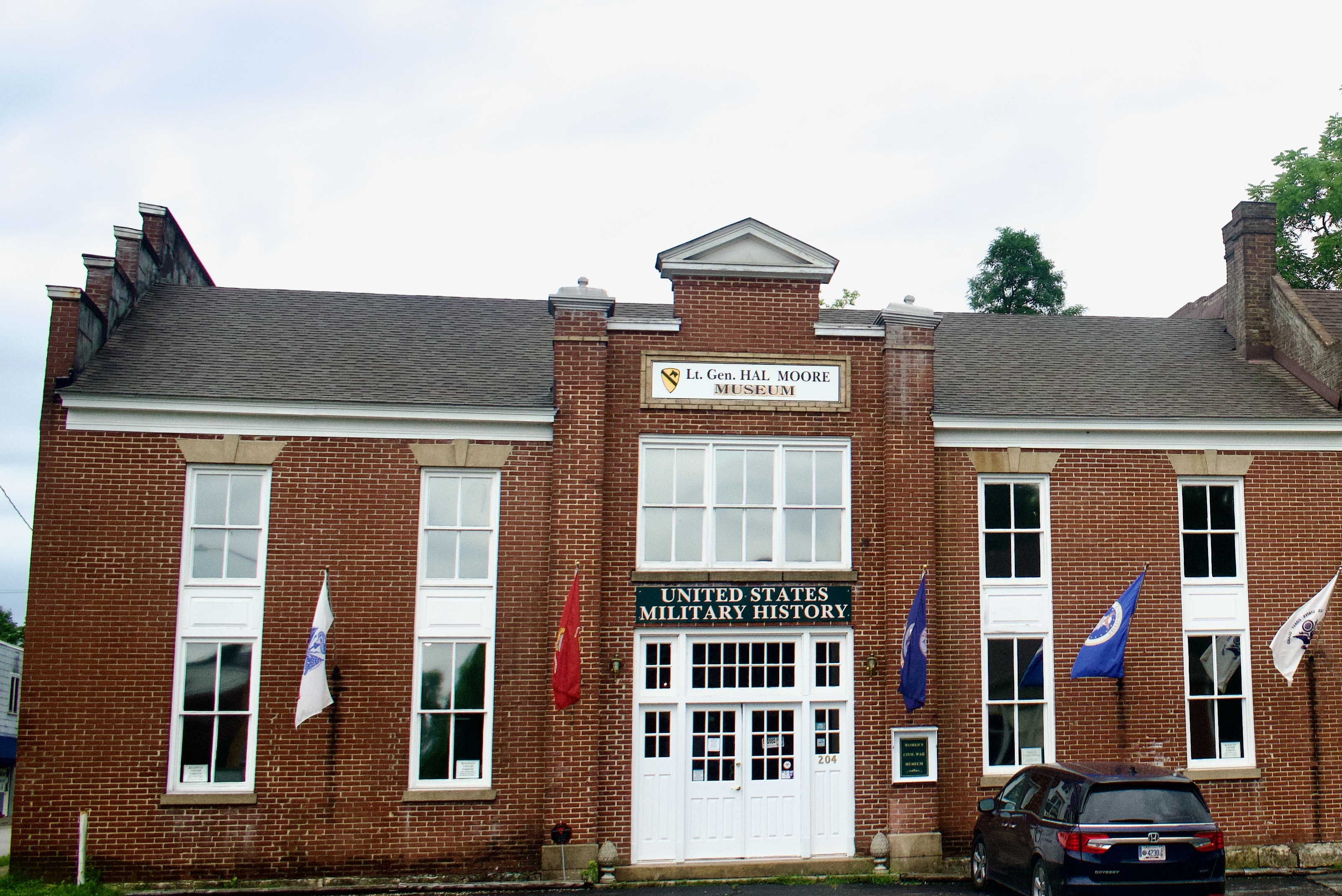 |
The Hal Moore Museum Of Military History is a monument to local hero Lieutenant General Hal Moore, one of the most admired American combat leaders of the post World War II 20th Century. He was portrayed by Mel Gibson in the movie We Were Soldiers, which depicts Moore's heroism in leading a unit of 400 men to victory over several thousand North Vietnamese. Billy, the host, is a retired fighter jet pilot who flew missions over Vietnam. He's full of stories and insights and is worth a visit just to talk to. Among the other gems here are a silk escape map which Americans operating behind enemy lines carried in case they were captured and taken to one of the German concentration camps, an almost brand new German flight suit whose pilot was shot down on a London bombing raid, and various uniforms and weapons, and all of Hal Moore's personal equipment from Vietnam. The Museum covers WWI and II, Korea, Vietnam, Desert Storm and Afghanistan and mainly focuses on Army and Marine battles on the ground, mentioning Navy and Air Force events only briefly. |
| The Museum Of Women At War covers an important but much neglected topic. Because photos and artifacts of women at war or at home in critical civilian jobs are rare, this is not a large museum but it shows women as nurses, clerical workers, code breakers, and working in the mills and factories with all the men off to war. The museum tells the stories of several women who became famous for their efforts, including Rosie The Riveter and Clara Barton (who went on to found the Red Cross). The museum covers women from the Civil War through Afghanistan but is most effective in its coverage of the Civil War and World War II. 59,000 nurses served in the military during World War II. |  |
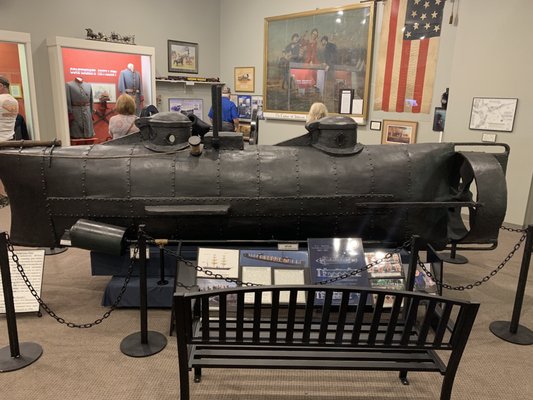 |
The Bardstown Civil War Museum is the best of the six collections. Among other valuable artifacts, it shows this submarine, the Hunley, which succeeded in sinking Union ships before itself sinking. The museum contains paintings and photos along with weapons, uniforms and other artifacts. It contains both Union and Confederate items. Importantly, this is a Museum of the Civil War West of the Alleghenies, so it does not focus on battles at Gettysburg, Antietam, etc., but on those at Perryville, Nashville, etc. Both Union and Confederate armies occupied homes and plantations in and around Bardstown, and many of the items displayed were donated or loaned by local families. |
| Old Bardstown Village is a collection of important log cabins rescued from various places in Nelson County, dismantled, brought here and reassembled. Included are a doctor's office, blacksmith's shop, school, church, store, bar, and several family homes. The contracter laid a foundation under each cabin, calked between the logs and built new roofs, so the cabins are sturdy and well protected from the weather. You can go inside many ande look inside the rest. They're not a reconstruction of a real village but a simulation of what a typical village would have looked like. This would be an ideal site for costumed reenactors to perform tasks of that time period and answer visitors' questions, but right now the money for that is not available. Out of sight to the left is an old mill with a classic sluice and wheel, but it needs work to reactivate. Fittingly, Town Creek runs through the collection. Town Creek was the site of the original Bardstown settlement. | 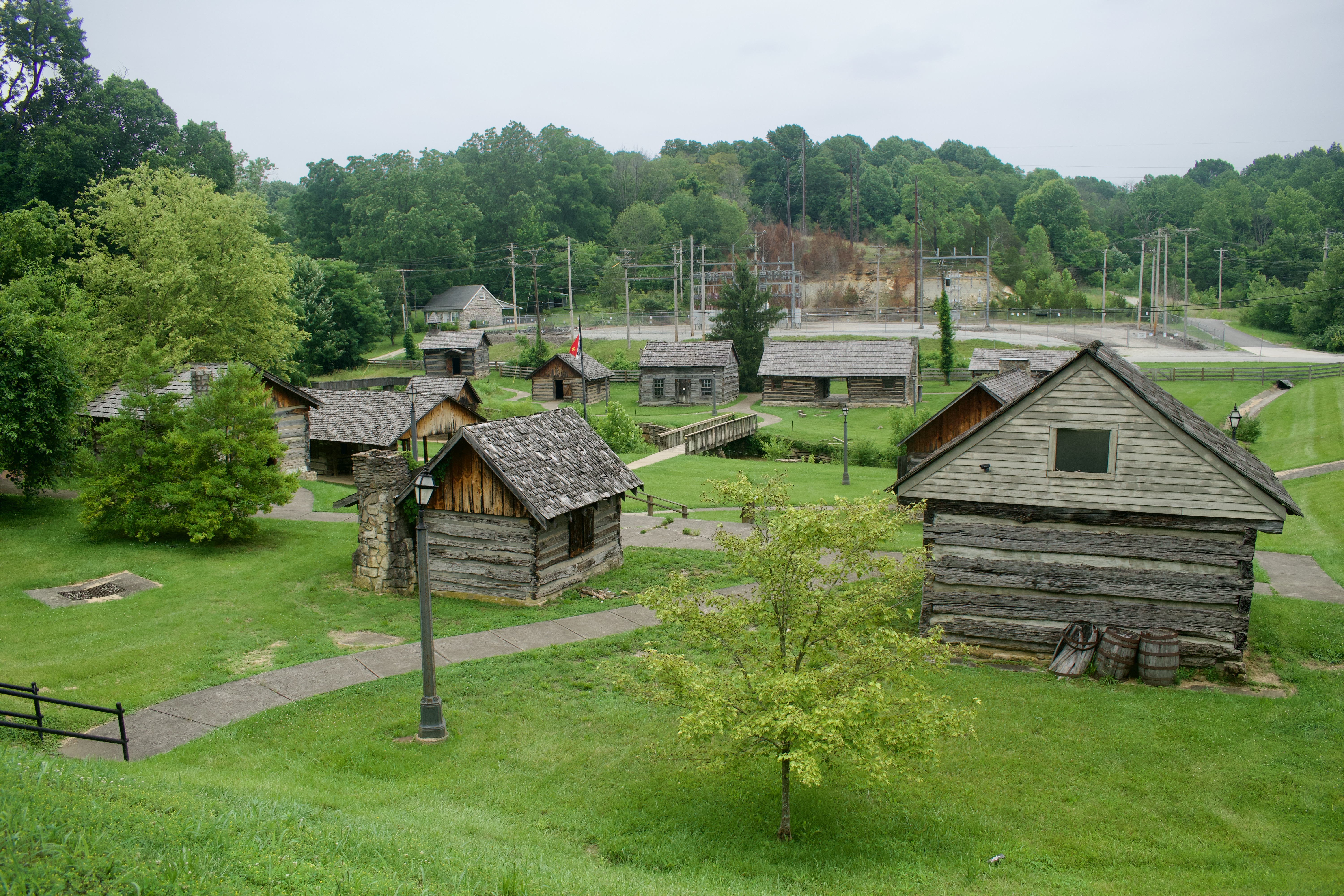 |
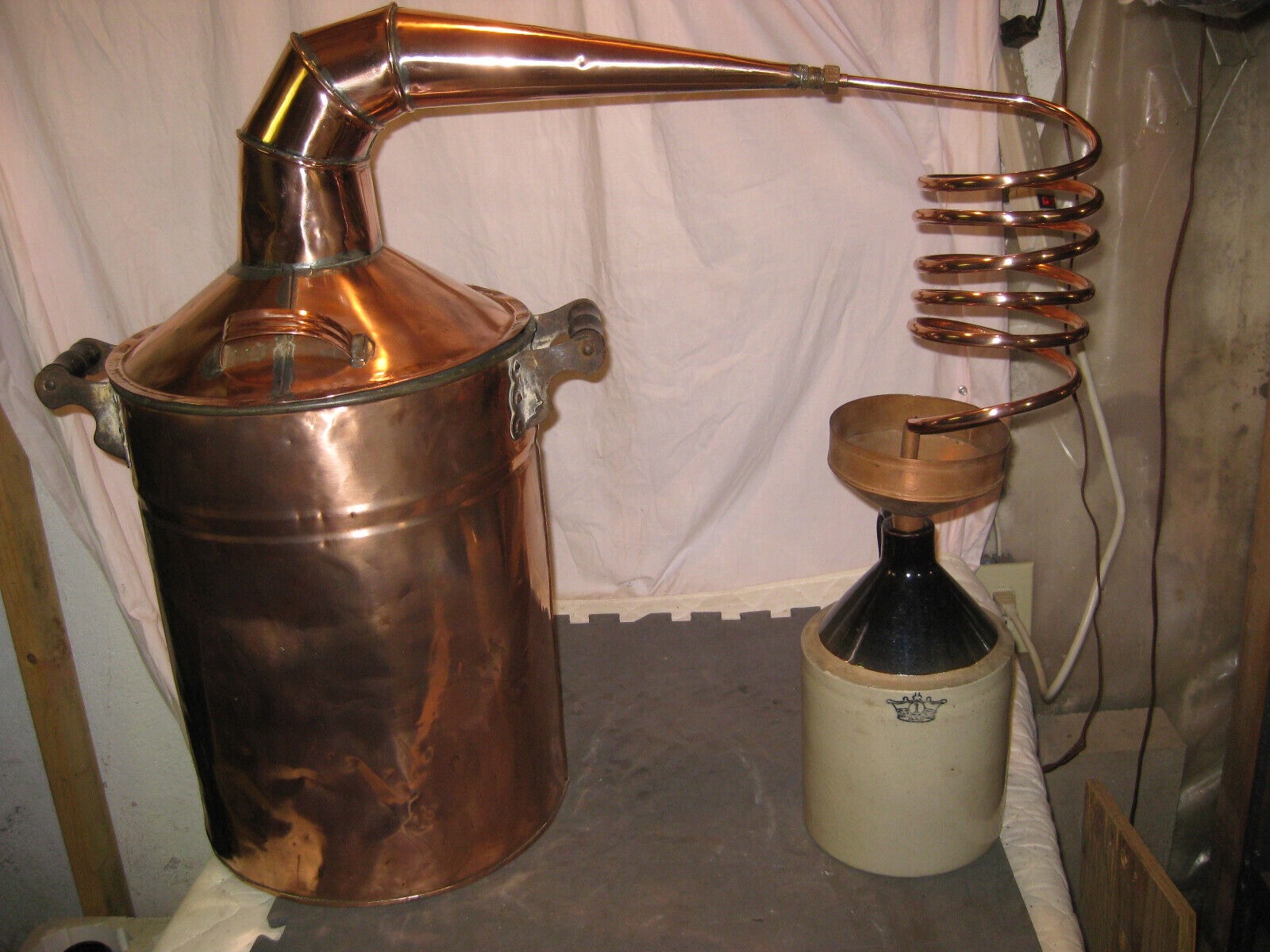 |
The Oscar Getz Museum Of Whiskey History is much better than you might expect from a small town. There are excellent collections of artifacts tracing the evolution of whiskey making from its early roots in Scotland and even before, to Kentucky and the evoliution of Bourbon. You'll learn about early packaging and marketing, Prohibition, recovery, and the modern explosion of Bourbon into a world favorite beverage. You'll learn about the various characters, often quite eccentric, who founded and grew the Bourbon industry. Along the way you'll learn about Rye, Corn and Wheat, about why Copper is essential, and about why Central Kentucky water is different and special and why Whiskey can be made anywhere but Bourbon can only be made in this region of this state. This would be a great stop to make before you tour any of the great distilleries, because it gives you a broad introduction, a context, before you start learning the specifics of Makers Mark, Jim Beam or any other manufacturer. The museum is located in the basement of Spalding Hall, on Xavier Street, at the other end of Broadway from the military museums. Drive two blocks west of North Third Street, turn left on 5th and immediately right onto Xavier. The museum and parking is on your left. |
| The Bardstown Historical Museum is also in Spalding Hall on Xavier Street off Fifth Street, two blocks west of North Third. It's small but has many unique items. They include Native American and Civil War weapons, clothes and artifacts; items from St. Joseph Prep School, Stephen Foster memorabilia, an exhibit about the local Trappist monks, a large collection of American silver 1860-1990, and a Kentucky Long Rifle (they were made here under the supervision of famed gunsmith Jacob Rizer). The most unique item may be a Porcupine Quill Coat worn by the local Native Americans. (Quillwork was done by local Native American women until the Whites introduced beads, which were easier to use and offered colors. After about 1850, quillwork was abandoned. But prior to that, skilled women could produce amazing clothing decorated with quillwork.) | 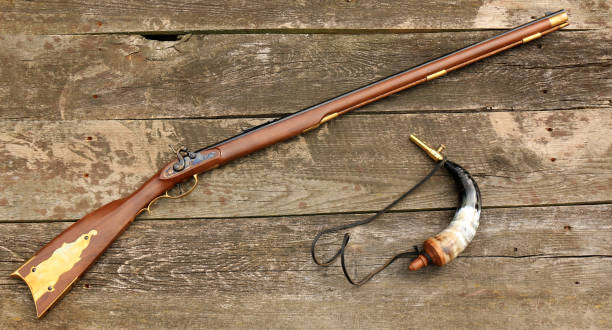 |
|
|||
|